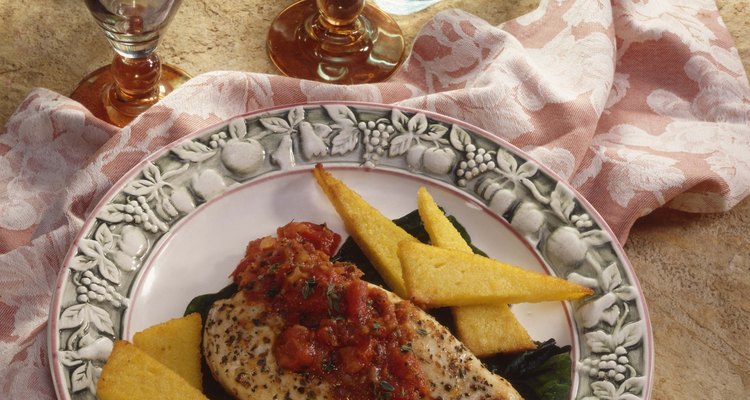
Unassuming polenta -- cooked cornmeal -- needs a boost in the flavor department. Even when covered with a sauce, such as marinara, polenta could use a little help. Season the polenta before, during and after it's been cooked to build layers of flavor. The finished polenta may be served as a creamy side dish or cut into squares and fried or grilled after it has cooled and hardened.
The Liquid Makes a Difference
Plain polenta is cooked with water, which is pretty much flavorless. Use milk to replace the water. Chicken broth is another option. If you're serving the polenta with beef, use beef broth. Corn meal needs a lot of liquid to turn into polenta, so if you're using a commercially produced cream soup such as celery or mushroom, dilute the soup. You may need more water than the directions specify.
Spice It Up
Polenta is a blank canvas waiting for the pungency and snap of spices. Salt and pepper are the basics, but go further than that. Match the spices you use with the main dish the polenta will be served with. For example, if you're serving a Mexican entrée, then cumin, red pepper flakes or cayenne pepper would be appropriate. Add a few pinches while the polenta is cooking. When it's almost ready, taste and add more spices as necessary.
Herbs to the Rescue
Herbs bring a breath of freshness to the polenta. Crush dried herbs before adding to the corn meal. Be careful with strongly flavored herbs such as rosemary and sage. If you add too much, the polenta will only taste like that herb. Garnish the polenta with chopped fresh herbs. Turn the herbs into a sauce by blending them with oil. Chopped onions, scallions and shallots aren't really herbs, but they flavor the polenta nicely. Either sauté them first or let the heat of cooking the polenta soften the onions. Add them right before the polenta is done to retain some crispness in the onion and its relatives.
Delicious Dairy
Cheese add a tasty tang to the polenta when added at the end of cooking. Try shredded cheddar, Parmesan, Romano, Gorgonzola or Monterey Jack cheese. If you use mozzarella, however, the cheese could make the polenta stringy. Mild cheeses such as goat cheese get lost, although they add creaminess to the finished dish. Butter also adds creaminess. Use unsalted butter so the polenta isn't over salted by the time you're done.
Related Articles

Can You Use Corn Meal to Make Tamales?
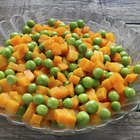
How to Season Peas & Carrots
KFC Green Beans Recipe

How to Make Stuffed Derma
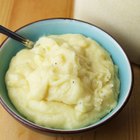
How to Make Cornmeal Polenta

Can I Put Fresh Chopped Basil in Store ...

How to Make Corn Soup

How to Cook a Rolled Beef Chuck Roast ...

Classic Russian Spices

How to Cook With Garlic Salt

What to Use as a Thickening Agent for ...

A Substitute for Japanese Parsley

How to Fix Lipton Onion Soup
Easy Broccoli Cheese Soup Recipe

How to Make a Tender and Juicy Pot Roast
Easy Chicken Tortilla Soup Recipe
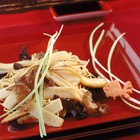
How to Eat Canned Bamboo Shoots

How Long Does It Take to Cook Linguine?
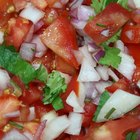
Quesadilla Spices
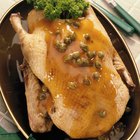
How to Buy and Use Capers in Cooking
References
- A Fresh Taste of Italy; Michele Scicolone
- New York Times: Winter's Balm -- A Bubbling Pot of Polenta
- Bon Appetit: Gorgonzola Polenta
Writer Bio
Katie Jensen's first book was published in 2000. Since then she has written additional books as well as screenplays, website content and e-books. Rosehill holds a Master of Business Administration from Arizona State University. Her articles specialize in business and personal finance. Her passion includes cooking, eating and writing about food.
Photo Credits
Jupiterimages/Stockbyte/Getty Images